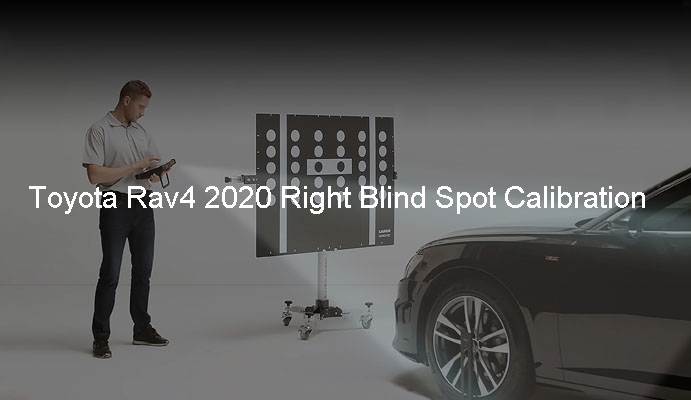Once your tires have been rotated, here are some general steps you can follow. Please note that the exact steps may vary by model and manufacturer, so it is recommended to consult your vehicle manual for detailed guidance.
① Using the vehicle control panel
② Use professional tools:
Some vehicles require the use of a professional TPMS scan tool to perform a reset. This usually requires a trip to a professional auto repair shop or tire service center, where a technician will perform the job.
③ Driving for a while:
In some cases, the TPMS system may automatically recalibrate after the vehicle has been driven for a period of time. This is because the system uses tire movement data to determine whether the tire pressure is normal. Therefore, you can drive for a while and wait for the system to recalibrate itself.
No matter which method you choose, after resetting the TPMS, be sure to check the tire pressure in each tire to make sure they are within the range specified by the vehicle manufacturer. If any problems occur or the warning light remains on, consult a professional technician for inspection and diagnosis. The vehicle manufacturer's specific instructions and procedures may vary, so it is important to consult your vehicle manual.

Read on to learn more about tire pressure monitoring systems and Tire Rotation.
TABLE OF CONTENTS
Tire pressure monitoring system(TPMS) is a vehicle safety technology used to monitor a vehicle's tire pressure. Tire pressure monitoring systems usually consist of a control unit, sensors and display devices, and sound an alarm when tire pressure is insufficient or excessive.
Tire pressure monitoring system monitors the tire pressure in each tire to ensure they are within a safe range. When a tire is under-inflated or over-inflated, the driver is warned, usually through an indicator light or warning message on the vehicle's dashboard.
The tire pressure monitoring system plays an important role in maintaining the stability, stability and economy of the vehicle, which is mainly reflected in the following aspects:
① Improve fuel efficiency: Low tire pressure requires more energy to drive the tire to roll, thus reducing fuel economy. Ensuring the proper tire pressure contributes to enhancing fuel efficiency.
② Improve safety: Incorrect tire pressure may affect the vehicle's handling and braking performance, increasing the risk of accidents. Proper tire pressure helps reduce the likelihood of a tire blowout.
③ Extend tire life: Incorrect tire pressure may cause uneven wear and shorten their life. Maintaining the right tire pressure contributes to prolonging the lifespan of your tires.
④ Cost savings: Maintaining proper tire pressure can reduce tire replacement and fuel costs, thereby reducing maintenance expenses for car owners.
Tire rotation refers to the process of regularly replacing the positions of a vehicle's four tires to achieve even wear and extend tire life. Tire rotation plays an important role in uniform wear, driving safety, cost savings, fuel efficiency and vehicle stability.
In general, it is usually recommended to rotate your tires every 5,000 to 8,000 miles. However, specific vehicle models and tire types may have different recommendations, and this can be followed by the vehicle manufacturer or professional mechanic's recommendations.
In short, tire rotation is one of the important steps in vehicle maintenance and helps improve vehicle safety, economy and performance.
The main reason why a TPMS needs to be recalibrated or reset after a tire rotation is to ensure that the system can accurately monitor the tire pressure of each tire to maintain vehicle safety and performance. Here are some key reasons why a TPMS needs to be recalibrated or re-calibrated:
① Uneven tire pressure: Usually the positions of the front and rear wheels or the left and right wheels are exchanged. After the tires are rotated, this may lead to uneven tire pressure in each tire. Uneven tire pressure may cause the TPMS system to incorrectly identify tire pressure problems on certain tires, resulting in false alarms or no alarms, thus affecting driving safety.
② System calibration: The TPMS system is usually calibrated when the vehicle leaves the factory to record the association of each sensor with a specific tire position. When tire position changes (such as tire rotation), the TPMS system may lose correct tire-to-sensor matching. Recalibrating or resetting the TPMS can help the system establish a new tire-sensor association.
③ Accurate warnings: Recalibrating or resetting the TPMS ensures that the system can correctly detect any incorrect tire pressure and issue a warning if necessary to remind the driver to take steps to fix the problem.
④ Comply with regulations: In some areas, regulations require vehicle owners to ensure that the vehicle’s TPMS system is working properly. Therefore, recalibrating or resetting the TPMS is a necessary step to comply with regulations.
⑤ Vehicle performance: Proper tire pressure helps maintain the vehicle's suspension and handling performance. If the TPMS system is not properly calibrated, the vehicle may perform poorly while driving.
Recalibrating or resetting the TPMS is a critical step to ensure the tire pressure monitoring system is functioning properly and maintaining vehicle safety and performance, especially after maintenance operations such as tire rotation.
How to check TPMS sensors to make sure they are not damaged or broken. You can do the following:
① Appearance inspection: The tire sensor is usually located on the inside of the tire and attached to the rim. Inspect the sensor housing for obvious physical damage such as cracks, breaks, deformation, corrosion, or damaged seals. These problems can cause sensor performance to degrade.
② Tire maintenance: Make sure the tires are not stuck or punctured by foreign objects, because damage from external objects may affect the work of the sensor. Check the tire surface for any sharp objects, such as nails or shards of glass, and for damaged tire walls around the tire.
③ Warning indicator light: If your vehicle is equipped with a TPMS system, observe the TPMS warning indicator light on the vehicle dashboard. If the light stays on, this could be one of the signs of a problem with the sensor. In this case, a professional diagnosis is required.
④ Tire pressure check: Check the tire pressure of each tire regularly. If you notice that one tire has significantly lower pressure than others, there may be a problem with the sensor. In this case, the tire's sensors need to be checked.
Remember, the TPMS sensor is a critical safety component that helps ensure your vehicle's tire pressure is within safe limits. If you suspect a sensor problem or notice obvious damage, take steps to repair or replace them as soon as possible to maintain your vehicle's safety and performance. Maintaining the TPMS system is part of vehicle maintenance and helps reduce safety risks that may result from tire pressure issues.
Resources
Below are some links you may find helpful when learning about TPMS
Activate TPMS Sensor
Tire Pressure Monitoring System(TPMS): Everything You Need to Know
When is TPMS Sensor Calibration Needed?
Return



